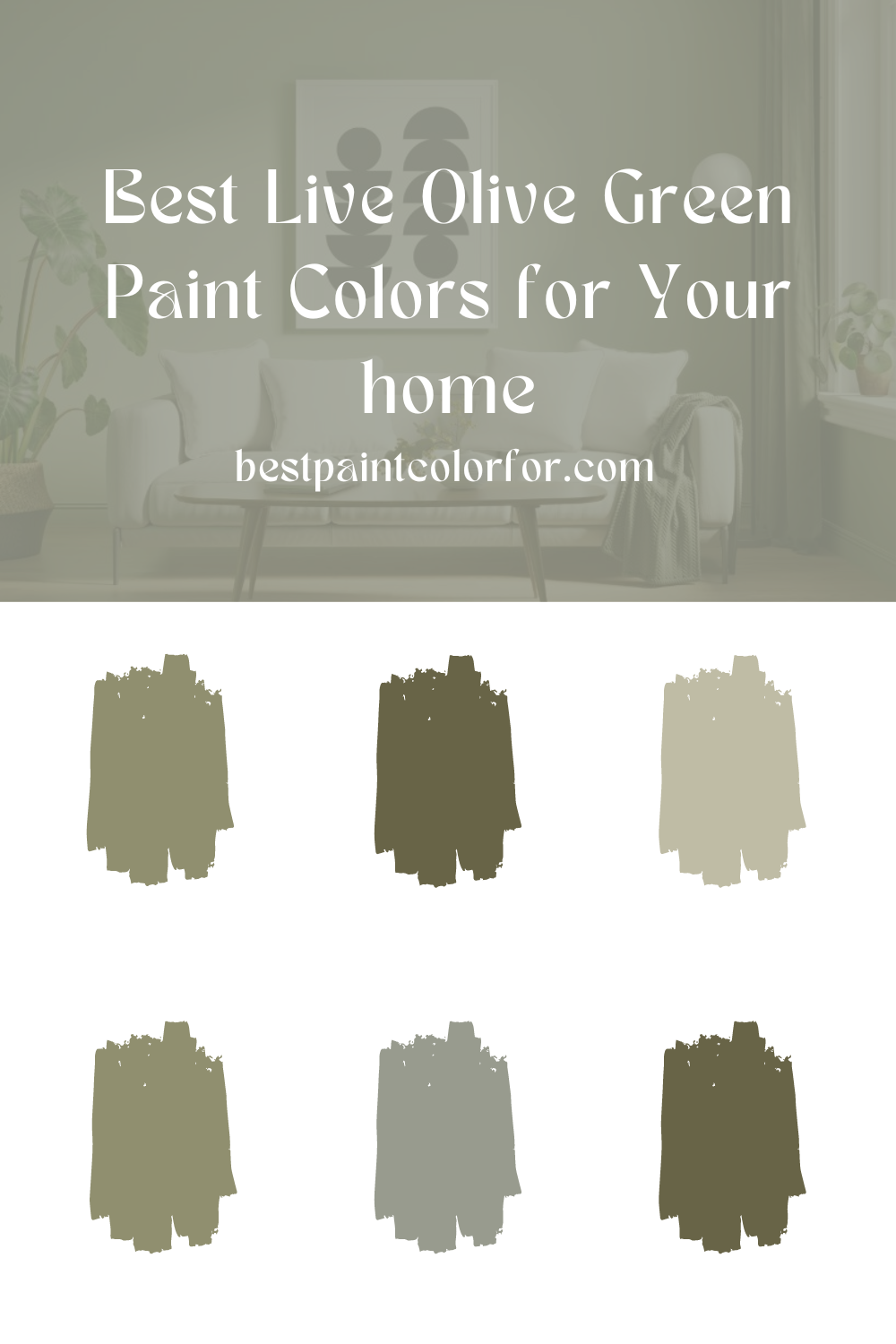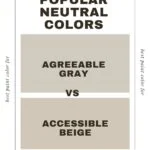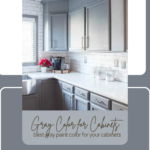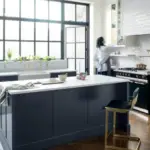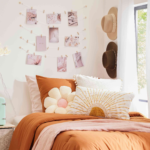In the realm of interior design, live olive green has emerged as a favored choice, seamlessly blending calming undertones with a bold presence.
Whether you seek to envelop your walls entirely or introduce a subtle splash of color, light olive green offers versatility and style.
However, amidst the plethora of available shades, selecting the ideal light olive green paint color becomes a nuanced task.
- Considering the Details
- Seeking Inspiration
- Navigating the Spectrum
- Brand Recommendations
- Sherwin Williams Green Onyx:
- Benjamin Moore Thicket:
- Sherwin Williams Lemon Verbena:
- Benjamin Moore Martini Olive:
- Farrow and Ball Sap Green:
- Sherwin Williams Lemongrass:
- Benjamin Moore Spanish Olive:
- Benjamin Moore Olive Tree:
- Benjamin Moore Hiking Path:
- Sherwin Williams Celery:
- Benjamin Moore Savannah Moss:
- Sherwin Williams Baby Bok Choy:
- Benjamin Moore Jalapeño Pepper:
- Sherwin Williams Ryegrass:
- Benjamin Moore Raintree Green:
- Final Verdict
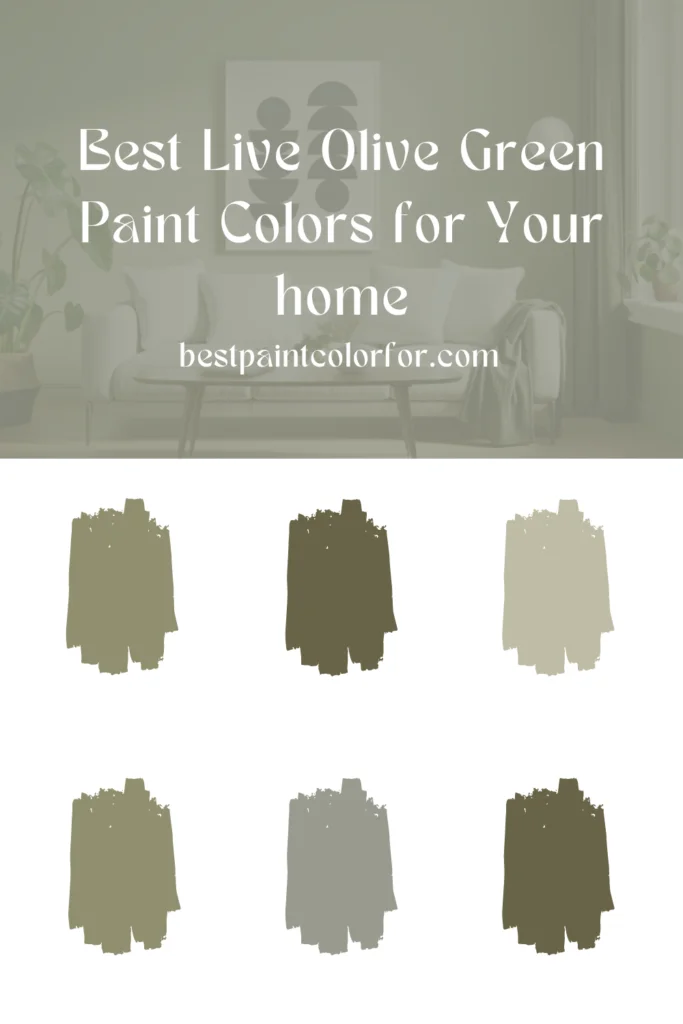
Considering the Details
Embarking on a journey to refresh your living space with light olive green paint warrants thoughtful consideration of various factors.
Beyond mere aesthetics, ponder over your existing furniture, decor pieces, carpets, and other fixtures that will remain post-painting.

Pro Grade Paint Roller Kit, Brush & Roller for Professionals & Homeowners
Perfect for smooth finishes on your interior walls. Ideal for home improvement enthusiasts!
Buy Now on AmazonEach element contributes to the overall ambiance, influencing the compatibility of different olive green shades.
Seeking Inspiration
In the digital age, inspiration is just a click away. Peruse online platforms showcasing light olive green home aesthetics to glean insights into harmonious color combinations.
By immersing yourself in curated visuals, you can discern which hues resonate most with your home’s layout and style preferences.
Navigating the Spectrum
Light Olive green encompasses a spectrum of shades, each offering distinct characteristics. From lighter variants exuding a subtle elegance to darker hues commanding attention, the spectrum is vast.
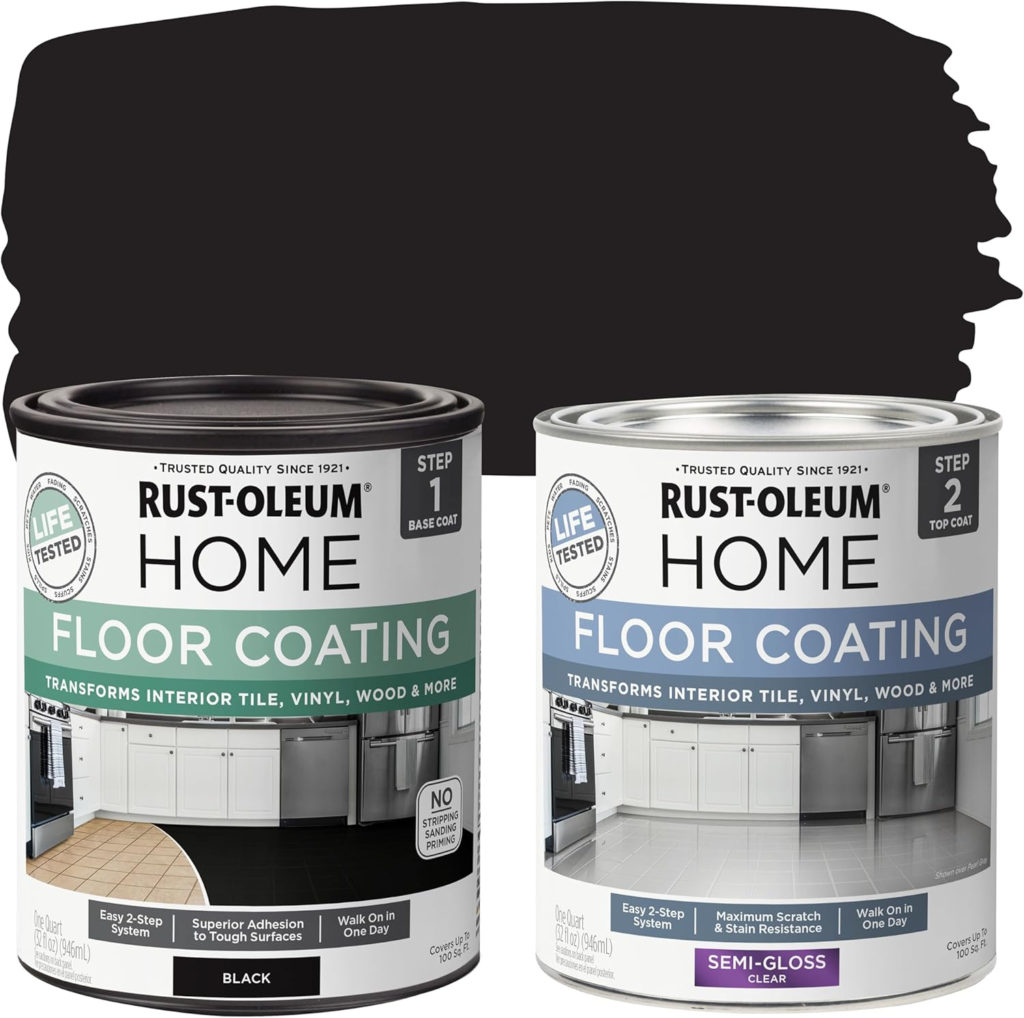
Rust-Oleum 367605 Home Interior Floor Coating Kit, Semi-Gloss Black
Ideal for updating outdated flooring at a fraction of the cost of replacement and adheres without stripping, sanding or priming.
Buy Now on AmazonBegin by determining whether your inclination leans towards lighter or darker tones. This preliminary decision serves as a compass, guiding you towards the perfect tint amidst the myriad options.
Brand Recommendations
When it comes to quality paint, trusted brands like Sherwin Williams and Benjamin Moore reign supreme.
Explore their collections to discover a myriad of olive green options, each meticulously formulated to deliver exceptional color fidelity and coverage.
In essence, the journey towards selecting the right shade of olive green paint entails a blend of introspection, inspiration, and informed decision-making.
By carefully considering your home’s unique characteristics and exploring the diverse array of available hues, you can transform your living space into a captivating oasis of style and sophistication.

Sherwin Williams Green Onyx:
Appearance: A medium olive green with muted tones.
Undertones: Warm earthy undertones with a hint of gray.
Relevant Colors: Neutrals like beige and gray, warmer tones such as terracotta and mustard.
Best Uses: Ideal for creating a relaxed and inviting atmosphere in living rooms, bedrooms, or kitchen spaces.
Pros: Versatile in complementing various decor styles, evokes a sense of tranquility.
Cons: May lack vibrancy in spaces requiring a bold color statement.
Benjamin Moore Thicket:
Appearance: Soft olive green with subtle yellow undertones.
Undertones: Subtle warmth, suitable for opening up smaller spaces.
Relevant Colors: Natural materials like wood and stone, soft blues, and creams.
Best Uses: Main wall color or accent hue, suitable for creating an illusion of airiness.
Pros: Brightens and enlivens spaces without overwhelming, versatile.
Cons: May appear too subtle in larger rooms requiring more visual impact.

Sherwin Williams Lemon Verbena:
Appearance: Slightly muted yet vibrant olive green.
Undertones: Subtle warmth with a hint of brightness.
Relevant Colors: Neutral tones, pastel shades, earthy hues.
Best Uses: Adds vibrancy to any space, suitable for both modern and traditional decor.
Pros: Offers a refreshing pop of color, versatile.
Cons: May not suit spaces requiring a more subdued ambiance.

Benjamin Moore Martini Olive:
Appearance: Extremely vibrant and playful olive green.
Undertones: Bold and rich with undertones of gold.
Relevant Colors: Bold contrasting colors, metallic accents.
Best Uses: Accents and focal points, suitable for eclectic and energetic spaces.
Pros: Adds drama and personality to any room, eye-catching.
Cons: Can be overwhelming in large doses, may clash with certain decor styles.
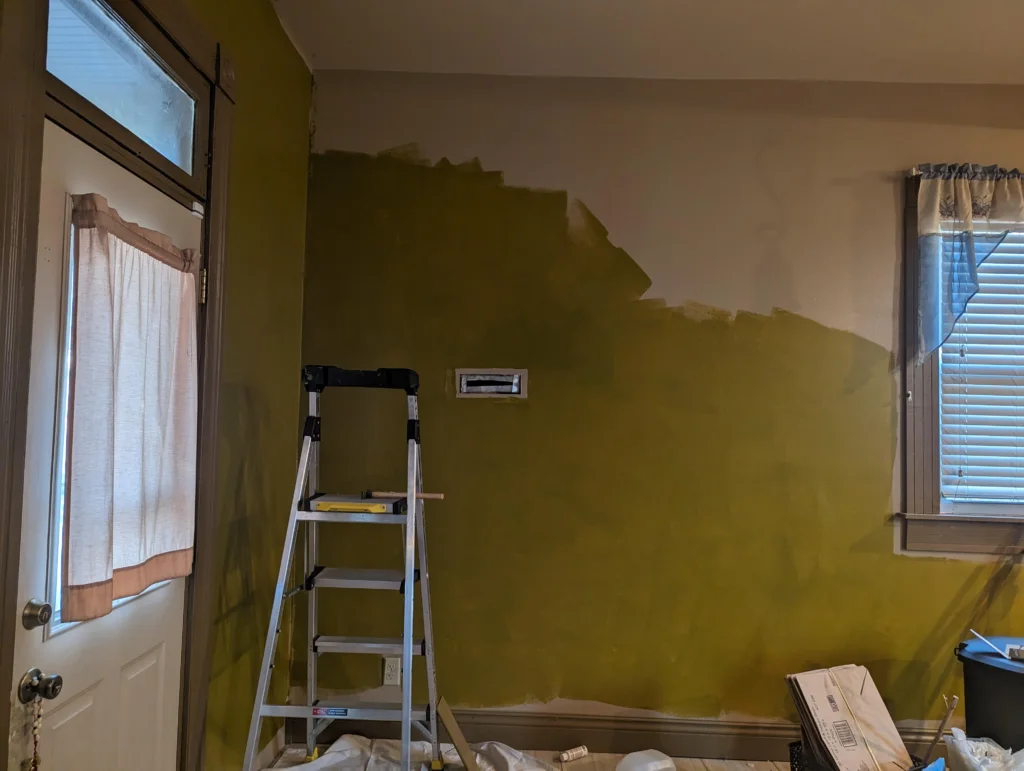
Farrow and Ball Sap Green:
Appearance: Soft and rich olive green.
Undertones: Natural and earthy, reminiscent of lush vegetation.
Relevant Colors: Neutral tones, natural materials.
Best Uses: Accent elements in smaller spaces, brings a touch of nature indoors.
Pros: Adds depth and sophistication, creates a calming ambiance.
Cons: May appear too subdued for rooms requiring a brighter color palette.
Sherwin Williams Lemongrass:
Appearance: Yellow-green mix with a warm, natural glow.
Undertones: Subtle yellow undertones with a hint of green freshness.
Relevant Colors: Earthy tones, natural sunlight, botanical-inspired hues.
Best Uses: Infuses warmth and brightness, suitable for kitchen spaces, sunrooms, or accents in any room.
Pros: Adds a fresh and uplifting vibe, complements natural light beautifully.
Cons: May clash with cool-toned decor, requires careful pairing with other colors.

Benjamin Moore Spanish Olive:
Appearance: Faded, mid-tone olive green with soft gray undertones.
Undertones: Subtle combination of olive and gray, reminiscent of aged foliage.
Relevant Colors: Neutral tones, vintage-inspired hues, earthy accents.
Best Uses: Creates a nostalgic atmosphere, suitable for vintage or rustic decor.
Pros: Adds depth and character, pairs well with antique furnishings.
Cons: May appear too muted for spaces requiring a brighter color scheme.

Benjamin Moore Olive Tree:
Appearance: Bright olive green with a subtle undertone of gold.
Undertones: Warm and inviting, with a hint of metallic sheen.
Relevant Colors: Rich earthy tones, metallic accents, warm neutrals.
Best Uses: Accentuating focal points, adding warmth and luxury to any room.
Pros: Energetic and eye-catching, creates a sense of opulence.
Cons: Can be overpowering in large doses, requires careful balancing with other colors.

Benjamin Moore Hiking Path:
Appearance: Olive green with golden undertones, slightly muted.
Undertones: Warmth and richness, reminiscent of sun-kissed foliage.
Relevant Colors: Earthy tones, natural materials, warm neutrals.
Best Uses: Creates a cozy and inviting atmosphere, suitable for living rooms or bedrooms.
Pros: Adds warmth and depth, complements natural light beautifully.
Cons: May appear too subdued for spaces requiring a brighter color palette.

Sherwin Williams Celery:
Appearance: Blend of light olive green and subtle yellow.
Undertones: Fresh and lively with a hint of warmth.
Relevant Colors: Light neutrals, botanical-inspired hues, soft pastels.
Best Uses: Evokes a sense of fresh spring weather, ideal for kitchens, dining rooms, or bathrooms.
Pros: Brightens and revitalizes spaces, creates a cheerful ambiance.
Cons: May clash with cool-toned decor, requires careful consideration of lighting.

Benjamin Moore Savannah Moss:
Appearance: Rich hue combining yellow and green.
Undertones: Lush and verdant, reminiscent of forest foliage.
Relevant Colors: Earthy tones, natural materials, warm neutrals.
Best Uses: Infuses spaces with a sense of nature and tranquility, ideal for bedrooms or study areas.
Pros: Creates a serene and grounding atmosphere, adds depth and sophistication.
Cons: May appear too intense for smaller spaces or rooms with limited natural light.

Sherwin Williams Baby Bok Choy:
Appearance: Light and muted olive green.
Undertones: Soft and subtle, with a delicate yellow-green hue.
Relevant Colors: Off-white, beige, soft pastels.
Best Uses: Creates a soothing and gentle ambiance, perfect for nurseries, bedrooms, or reading nooks.
Pros: Enhances a sense of tranquility, complements light and airy decor.
Cons: May lack vibrancy for spaces requiring a bolder color statement.
Benjamin Moore Jalapeño Pepper:
Appearance: Light olive green with equal parts yellow and green.
Undertones: Energizing and vibrant, with a lively mix of warm tones.
Relevant Colors: Bold accents, warm neutrals, metallic finishes.
Best Uses: Adds energy and vibrancy to any space, perfect for accent walls or statement pieces.
Pros: Infuses spaces with warmth and vitality, creates a dynamic focal point.
Cons: Can be overwhelming in large doses, requires careful balancing with other colors.
Sherwin Williams Ryegrass:
Appearance: Soft and muted olive green.
Undertones: Subtle warmth with a hint of earthiness.
Relevant Colors: Brown-based beige, warm neutrals, earthy tones.
Best Uses: Creates a serene and peaceful atmosphere, suitable for bedrooms or meditation spaces.
Pros: Enhances a sense of relaxation, pairs well with natural materials.
Cons: May appear too subdued for spaces requiring a brighter color palette.
Benjamin Moore Raintree Green:
Appearance: Olive green with gray undertones.
Undertones: Muted and subdued, with a touch of coolness.
Relevant Colors: Soft neutrals, cool blues, gray-based tones.
Best Uses: Creates a calming and sophisticated atmosphere, suitable for living rooms or home offices.

Pros: Adds depth and complexity, pairs well with contemporary decor.
Cons: May appear too cool for spaces requiring a warmer ambiance.
Final Verdict
Each of these light olive green paint colors offers its own unique charm and characteristics, providing homeowners with a wide range of options to enhance their living spaces according to their preferences and style preferences.

